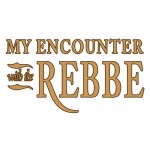Rabbi Alex Stern
My late father Rabbi Yerachmiel Stern took me to my first farbrengen in 770. He was a learned man, from a family of Alexander chasidim. Back in Poland, Alexander had been one of the largest groups of chasidim in the country, but it was completely decimated in the war. Be that as it may, he wanted our family to have a chasidic influence, so he thought it would be a good idea to take me to the Rebbes who were in New York. He took me to Satmar and Klausenberg and then, in 1965, he introduced me to Lubavitch.
I was about twelve years old, and we came in from Manhattan by train. We arrived early, and the place was empty, but then all of a sudden, at 8:30 PM a huge crowd began to arrive. This was before 770 was expanded, so I had to push and shove to catch a glimpse of the Rebbe. I remember that he had a small, blackish-gray beard. At one point, the chasidim were all singing the Belarusian song Nye Zhuritzi and the Rebbe stood up for a couple of minutes to encourage the ecstatic singing – as he waved his hand, the building shook. That was my first impression, and it was like nothing I had seen before.
A few years later, I was studying at the Rabbi Jacob Joseph School (RJJ). It is the oldest yeshivah in America, and at the time, it was on the Lower East Side, which is where we lived. A Lubavitcher named Reb Leibel Schapiro used to come by the yeshivah to teach a class on the Tanya, and he set up an audience with the Rebbe for my father and my brothers.
We came on a cold Thursday night, deep into the winter, and only got into the Rebbe’s room after 1:00 AM. As soon as the secretary opened the door for us, the Rebbe got out of his chair and came to greet us, which struck me. He was extremely friendly, and when we sat down, he began speaking in English.
We were brought up speaking Yiddish and so, out of everyone, I interjected to say that – ich farshtay Yiddish – and the Rebbe switched to Yiddish.
Over the next few years, we met with the Rebbe a couple more times and we brought him numerous questions of consequence in our lives. (more…)





